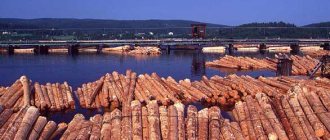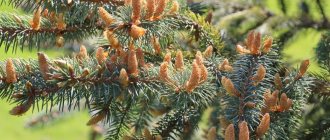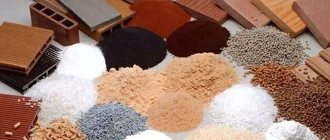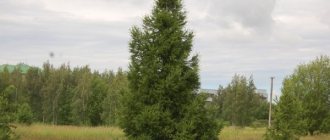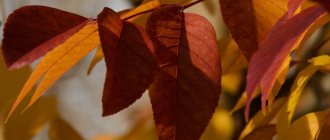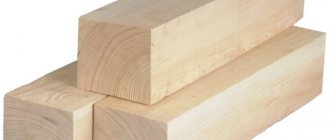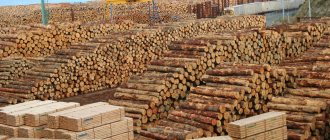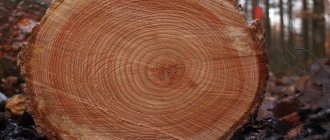What Elm looks like
Elm is a tall, slender tree of the elm family. The tree has smooth bark, strong roots and a dome-shaped crown of dense, large leaves.
In Russia, the most common is the Common Elm (or Smooth Elm). This tree reaches 25 meters in height. The girth of the trunk can exceed one and a half meters.
The bark has a light brown tint and begins to flake off on older trees. The old Elms, mottled with wrinkles, resemble wise elders who preserve the knowledge of humanity.
Smooth elm lives on average 300 years, while its counterparts are found much older.
Elm fruits are small lionfish with a nut in the center. They can be used in carpentry, folk medicine and even cooking.
Beneficial features
A decoction of elm bark is widely known and used in folk medicine, for diarrhea, to relieve the symptoms of gastritis, and helps in the treatment of ulcers.
Decoctions of elm leaves help against intestinal and kidney colic. Gruel from fresh elm leaves promotes wound healing. Compresses help with scabies and eczema.
Preparations based on elm leaves and bark have a beneficial effect on cardiovascular activity and normalize metabolic processes in the body.
Elm bark infusions are effective for cystitis.
The main effect of elm bark and leaves is anti-inflammatory.
Where does Elm grow?
There are about 16 species of elm. It is found in Western Siberia and Kazakhstan, the Southern Urals, the Caucasus and the Volga region, as well as in European countries and even Scandinavia.
Species native to Central Asia are called “Elm”.
Elm prefers fertile soil, reaching large sizes with proper care. Despite this, in natural conditions, Elm can easily tolerate drought and flood. In addition, Elm is a frost-resistant tree.
Due to its ability to trap dust, Elm is often used as screening plantings. A large and massive trunk with a dense crown often becomes an integral part of parks and gardens.
In nature, Elm is found in deciduous forests, along the banks of rivers and lakes, rarely forming pure stands.
Pharmacological properties of the tree and its use in medicine
The leaves and bark of these trees contain substances that have a number of beneficial effects: diuretic, anti-inflammatory, antibacterial. The bark is collected during the height of flowering - in the spring, and the leaves - in early summer in dry weather. Basically, to collect materials, smooth elm, which is planned for felling, is dried. The resulting bark can be used for two years - many decoctions and infusions are made from it for various purposes.
To treat inflammation of the bladder, accelerate muscle healing and for various swelling, a decoction of the bark is used, which can also help with some skin diseases, diseases of the digestive system, and is an excellent remedy for diarrhea. A decoction of elm leaves relieves colic and accelerates wound healing.
Elm bark is also used in medicine.
Infusions of elm bark, birch and willow buds will help relieve fever and colds. They contain large amounts of mucus and tannins. The latter, moreover, have a beneficial effect on the human body in case of burns and dermatitis.
Use of elm in industry
Elm wood is durable and flexible. It often replaces expensive breeds, successfully being dyed.
Elm is a favorite wood of cabinetmakers. Its dark brown wood is prized for making bent furniture and for setting veneer paintings in marquetry. The veneer of the tree roots is especially valued - the so-called butt part.
In addition, Elm wood is moisture resistant and was often used in the past in the construction of bridges and dams.
Due to its high tannin content, Elm bark is used for tanning and dyeing.
Elm is often used in parks and gardens, despite problems with pests attacking these beautiful trees. The dense crown of Elm allows the plant to be trimmed into bizarre shapes.
Mechanical and physical properties
Thanks to its powerful root system, elm grows in height up to 30 m and trunk diameter up to 1.5 m. The age of some species is 200-300 years.
Elm is classified as a sound species. Wood with a clearly expressed natural pattern, having a beautiful appearance with a noble shade. The sapwood is light yellow, the heartwood is slightly darker tinged to light brown. The growth rings are clearly visible in the cross section. The heart-shaped rays of the elm can be seen only in a radial section by their shine in the form of small strokes.
The high viscosity, hardness and wear resistance of elm creates difficulties when sawing wood, but contributes to its good processing, polishing and grinding. Elm bends well. It pickles well with dyes, can be pierced with nails without splintering, and glues satisfactorily.
Due to the small number of pores in wood, its surface after sanding and polishing is shiny and completely smooth. When dried in chambers, elm wood does not crack and practically does not warp. The texture of elm has irregularities of 200 microns, which is comparable to the texture of oak.
Elm has low resistance to rotting under normal conditions. It shows high levels of resistance to decay with limited oxygen content, i.e. in water and land. Competes even with larch. Growths called burls often form on the tree, and this wood is valued for its unique, beautiful structure in the manufacture of artistic products.
Durable and heavy elm wood is comparable in these indicators to oak, ash and beech.
Technical averages of wood:
- density (at humidity 12%) 550-700 kg/m³;
- hardness (Brinnell) 3.0-3.3 HB;
- shrinkage coefficient in the radial direction 0.15, tangential 0.32;
- strength (at a humidity of 15%) in compression along the fibers 38.9 MPa, in bending 85.2 MPa;
- spalling in the radial plane 7 MPa, tangential 7.7 MPa.
What else is elm useful for?
Elm belongs to the early honey plants. During good weather, the smooth elm always gathers many bees around itself.
Due to the powerful root system of the tree, it is used in fencing and securing plantings. In addition, elm leaves retain dust well, which is why it is common in parks.
Sources:
- https://NewDerevo.ru/listvennye-derevya/vyaz
- https://FB.ru/article/94974/vyaz—derevo-dolgojitel
- https://domsad.guru/derevya-kustarniki/vyaz-opisanie-i-foto-plody-i-listya-vyaza-kak-vyglyadit.html
- https://dizaynland.ru/derevya/vyaz
- https://sotka.guru/derevya/derevo-vyaz-vidy-lechebnye-svoystva-listev-i-kory.html
- https://krasnodarskiy.xyz/vyaz/
- https://drevologia.ru/vyaz-svojstva-drevesiny-poleznye-svojstva/
- https://hobbywood.ru/porody-drevesiny-vyaz/
- https://tsvetydoma.ru/sad/listvennyie-derevya/osnovnaya-informatsiya-o-vyaze-i-ego-vidah.html
- https://wood-prom.ru/clauses/vidy-drevesiny/vyaz
Wood, cut photo, price, how to use it, elm products
Elm wood is especially highly valued in industry. It practically does not rot even at high humidity.
This feature allowed elm to become especially popular in Europe, where it was used to make water pipes and build bridges.
Elm is a very dense wood, which makes its processing quite difficult. When cut, the tree has a beautiful texture with a light brown core and a soft yellow subbark.
Despite the difficulties that arise when cutting, the wood is polished quite easily, plus it glues perfectly and does not crack when dried.
On average, it is difficult to find wood of this type for less than 35,000 rubles/m3. Elm is widely used in the furniture industry, shipbuilding, flooring, and decorative elements.
Products made from elm are characterized by increased resistance to moisture and sunlight. That is why, despite the complexity of processing, elm wood does not lose popularity.
Let's watch an interesting video about the use of kargacha wood:
sacred tree
Elm is usually called several species of trees of the large elm genus, which also grows on Sakhalin. These beautiful strong trees can be seen both in the forest and on the street. In European countries they are known as elms. The root of the name is Celtic – elm. By the way, in Mother Russia the elm is also called elm. Its southern variety is known as birch bark. In Central Asia it is called elm (ebony). Echoes of the rituals performed by the Druids, the priests of the ancient Celts, whose magic was largely based on the use of plant powers, have been preserved. Elm, or elm, according to Druid beliefs, is a conductor of heavenly energy. But it is negatively charged. The Druids believed that the elm was a forest vampire. Unlike the oak, which feeds the world with its energy with all its might, the elm, on the contrary, takes away excess energy, protecting the world from wrong decisions. Thus, he does a good deed.
They believed in goodness. The Druids tied their especially violent relatives, who loved to make trouble, for some time to the trunk of the largest elm. The priests believed that the tree would draw out evil energy from the brawlers, and they would not do anything stupid.
The Druids believed that elm is a masculine tree, which is characterized by the spiritual qualities of a real man. He gives preference to such people, supports all their endeavors, helps them not to despair of failures and take the blow with dignity. Preferring men, the elm as a talisman supports all their endeavors. However, he does not tolerate losers and gives strength only to those men who are ready to go to the end in their struggle.
In the Middle Ages, knightly spears were made from elm, and they paid tribute not only to the strength of the wood, but also invested sacred meaning in the weapon. It was believed that such spears instilled courage in a warrior and helped him win battles. In magic, elm brings stability and support to the spell.
And the Dnieper Slavs made strong, three-finger-thick shields from elms. Their edges were bound with iron, and metal plaques were stuffed onto the front surface. The wiry, viscous wood of the shields did not chip from the blows of swords; arrows and spears were firmly stuck in it.
This is a tree from another world, say residents of the Russian outback. To this day, they are sure that at night all the sorcerers from the immediate area gather in its dense crown. Elms are a haven for werewolves, villains and other evil spirits. Suffice it to recall the chilling horror film eloquently titled “A Nightmare on Elm Street.”
There is a belief that elms should not be planted near human habitation.
He supposedly brings misfortune. They also said that the elm tree that grew not far from the church was finally cut down, since this proximity was perceived almost as blasphemy. EITHER ON PILES, AT LEAST ON BOOTS
Despite all the passion-faces and other horror films, people since ancient times have learned to benefit from elm trees. Even in the times of Ancient Rome, its wood was highly valued. At that time, elm grew in most of the Apennine Peninsula. It played an important role in the life of the Romans as a good building material. In those days, there were even special elm nurseries - ulmaria, which were mentioned by Pliny the Elder.
Among the Russian people, elm is also an important tree. Our ancestors used elm twigs to knit tues, baskets and other household items. Apparently, this is why this tree is translated from the ancient Slavic language as a flexible rod. Vladimir Dal adds in his dictionary that elm is one of the most flexible trees from which ties, logs for wells and dugouts are made...
Craftsmen used it to prepare high-quality cart wheel rims, arches and runners. The steamed stems of young elms were used for wooden hoops. “Without hoops, there is no power for rivets,” the coopers used to say.
Matting, bags, and ropes were woven from fibrous elm bark. In the old days, elm bast was used for the most elegant bast shoes that village grooms wove for their brides. Red maidens wore such bast shoes on holidays. The coarser bast was also not thrown away. He was allowed on boxes and sled bodies.
The wood of this tree is hard, elastic and durable. It polishes well, hardly warps and cracks slightly, and is difficult to split. It takes a lot of effort to process it. But, despite such a troublesome task, carpenters and joiners willingly took on it. Products made from elm turned out to be a feast for the eyes due to its attractive texture. Therefore they were highly valued.
House charms were often made from elm wood. And today, in many villages and villages, huts are decorated with the notorious “cockerels”. They are cut out and reinforced on roofs, supposedly for fire protection. They are not inferior to the “skates” - horse heads, which are supposed to drive away evil forces from the house and household. Since ancient times, the Slavs and other peoples revered the elm for its strength as a protector tree, a warrior tree.
Perhaps the most important advantage of elm is that it is not afraid of water. Piles made from it were used in the construction of canals and dams, as well as as fastening of mine workings. In “wet” Venice, many buildings stand on elm foundations.
AND A GREAT VACUUM CLEANER...
Elm is indispensable in urban landscaping. The dense shady crown of the elm protects from the summer heat. Elm is in the forefront of the most persistent fighters against urban smog. Its leaves are an excellent barrier to dust. The leaves on the branches of the tree sit as if sewn on, and all the dirt, dust, and soot that settles on them is held firmly, and not like on trees with long-petioled mobile leaves. The crowns of elms collect seven times more soot and soot than poplar leaves. Even on one shoot, the leaves can vary in size and shape, forming a beautiful lace, the so-called ligature.
Unfortunately, elm, or valley elm, growing in the Sakhalin forests, is rarely found in the cities and villages of our island region. Even in the regional center, not every street can boast that there is such a wonderful vacuum cleaner on its side.
Elm lives for quite a long time - up to 400 years. Although, of course, this age cannot be called a record for trees. Elm is a fairly unpretentious plant that tolerates both lack of moisture and excess moisture. It is able to grow on various soils: stony placers and rocks, on riverine sands and pebbles, and tolerates a lack of heat and its excess.
The elm blooms and bears fruit every year, until old age. The tree sheds its leaves for the winter, and in the spring, before new hair has grown, small, inconspicuous flowers appear on it.
The fruits are winged nuts and are carried by the wind in all directions. Inside the lionfish is a very fatty and tasty seed. For many birds it has become a favorite treat. Feeds elms and quadrupeds. Since ancient times, leaves and young shoots have been harvested as feed for horses and cattle, and seeds collected in the forest are very useful for both pregnant pigs and dairy cows.
...AND AN EXCELLENT DOCTOR
The healing properties of elm have been known for a long time. For many centuries, elm bark has been used in folk medicine.
“If a person’s hip disrupts its own steps,” wrote the 8th century scientist and physician Benedict Crisp in “Medical Notes,” “learn to extract the bark from an elm tree carefully. Mix madder with it and, rejoicing, drink the medicine.”
A tincture of smooth elm bark was used for dropsy and chronic rheumatism. When colds and fevers appeared, the same bark came to the rescue. Her tincture, together with willow bark and birch buds, quickly drove away the disease and helped the sick get back on their feet. It contains a lot of tannins and mucus, which have a beneficial effect even at elevated temperatures. This infusion is irreplaceable for skin diseases and burns.
Elm bark has been used by people for food purposes since ancient times. In the ancient Novgorod chronicles, and later in the chronicles of the 16th – 17th centuries, “ilem” was mentioned as a supplier of food when all other supplies dried up.
In lean years in Russian villages, elm bark was ground into flour and, mixed with the remains of cereal grains, kovrigs and flat cakes were baked. Elm bread, of course, was not particularly appetizing, but it provided food for the peasant, saving him from starvation.
